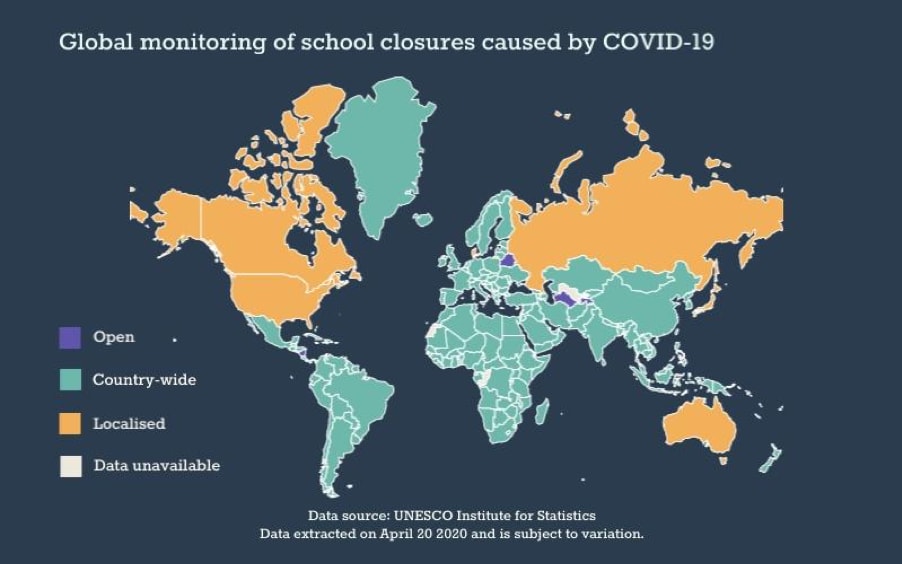BY XENIA SANUT
Worldwide school closures are impacting the education of more than a billion students, with those from low-income communities the hardest hit.
Government responses to the COVID-19 pandemic have included localised and country-wide lockdowns, affecting more than 90 per cent of total enrolled learners internationally, according to United Nations Educational, Scientific and Cultural Organization (UNESCO) figures.
International not-for-profit organisation Room to Read spokesperson Sam Fisk said the coronavirus pandemic is “one of the biggest crises to ever face education”.
“We see now more than ever the lack of infrastructure low-income communities have to lean on in a crisis, whether this be reliable internet connections, or home learning resources,” Mr Fisk said.
He added girls from low-income backgrounds were at a higher risk of discrimination and “hav[ing] their education put on pause” than boys.
“We also fear girls will never return to school again, given the pressures in low-income communities to marry and have children of their own early,” Mr Fisk said.
“As well as care for relatives and take up hard labour work to help out the family rather than gain an education.”
Mr Fisk said Room to Read is calling for families to ensure their children are safe and to encourage girls to return to school once the pandemic is over.
Room to Read has programs operating in 16 countries, largely throughout Asia and Africa.
Mr Fisk said the organisation is “working tirelessly” to ensure children can continue to learn despite schools being closed.
“For all children, boys and girls, education is a human right,” Mr Fisk said.
Most governments have enforced nation-wide closures of educational institutions to contain the spread of COVID-19.
Only schools in Belarus, Turkmenistan and Tajikstan continue to stay open with six countries, including Australia, enforcing localised closures.
India is believed to be most impacted with more than 300 million students affected.
This comes after the Indian government imposed a lockdown beginning March 24, banning residents from leaving their homes.
The lockdown included the closure of all educational institutions with permission to move to remote learning.
Indian high school student Madhav Sharma said that while his school has moved classes onto the video conferencing platform Zoom, government schools in India are struggling to make the transition.
“Despite the efforts to make them world-class, the majority of government schools in India are not in a good condition according to international standards,” Mr Sharma said.

“Children studying at government schools are mostly from a very poor background and it is not possible for them to be taught through video calling.”
Mr Sharma said the pandemic and the subsequent lockdown has also interrupted exams.
He added the graduating classes of 2020 and 2021 are concerned they may have to compete against each other for college admission.
“There are already very high cut off rates for admission into colleges in India,” he said.
“And students are worried that even if they score a perfect 100 per cent, their admission is still uncertain.”